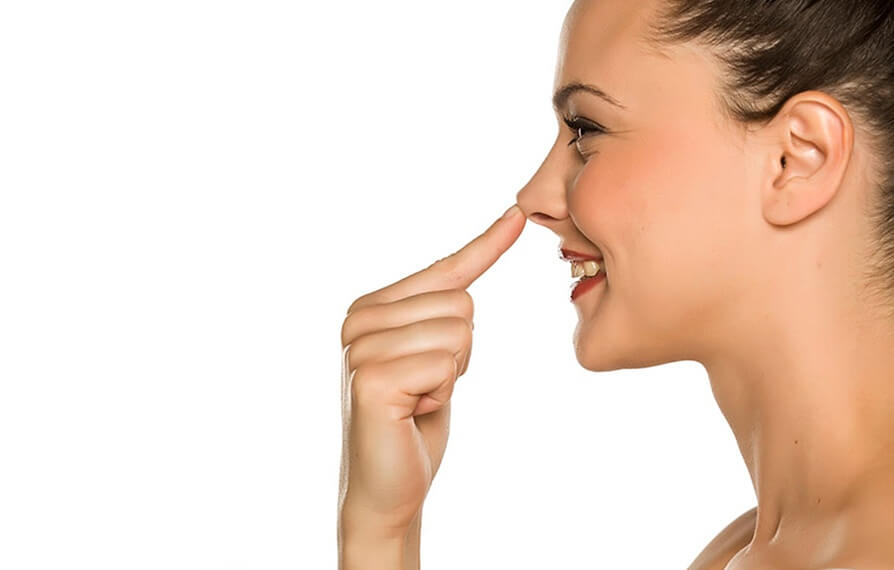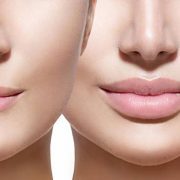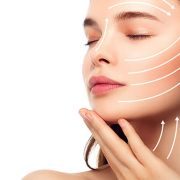Rhinoplasty (Nose Aesthetics)
Nowadays, people pay more attention to their appearance. This situation, plastic surgery has increased the popularity of its operations. One of these operations is rhinoplasty well rhinoplasty. Let's take a closer look at the details of this operation that helps people feel better and gain self-confidence.
What is Rhinoplasty?
rhinoplastyIt is the process of changing the shape of the nose for aesthetic and functional purposes. Rhinoplasty for aesthetic purposes aims to make the shape of the nose more suitable for the person's face. Functional rhinoplasty aims to provide better breathing by correcting the problems in the nose.
How is Rhinoplasty Performed?
Rhinoplasty is usually performed by two methods: closed rhinoplasty and open rhinoplasty. Closed rhinoplasty is performed through an intranasal approach, while open rhinoplasty is performed after a subcutaneous incision at the tip of the nose. Both methods have their own advantages.
Steps of the Operation
- Anesthesia: The operation is usually performed under general anesthesia, so the patient does not feel anything.
- Making an Incision: Depending on the method chosen, small incisions are made inside the nose or at the tip of the nose.
- Forming: The nasal cartilage and bone structure are shaped and corrected when necessary.
- Stitching: The incisions are stitched and the operation is completed.
- Healing Process: Swelling and bruising after the operation are normal, but they will disappear over time.
Who is Suitable for Rhinoplasty?
Rhinoplasty operation is suitable for healthy individuals who are not satisfied with their nose structure and want to change its appearance. Individuals who are in good general health and have completed adolescence may be candidates for the operation.
Advantages of Rhinoplasty
- More Harmonious Face: Rhinoplasty provides a more balanced appearance by obtaining a nose that is more compatible with other features of the face.
- Self-Confidence Increase: It positively affects social relationships by increasing a person's self-confidence.
- Better Breathing: Functional rhinoplasty eliminates breathing problems by correcting the curvatures in the nose.
How Should We Prepare for Rhinoplasty Surgery?
Photographs of the noses of patients who will undergo planned surgery can be taken. These images can be used to clarify postoperative expectations and help guide the surgeon during the operation. Another important point that patients should pay attention to is that they should not use non-steroidal anti-inflammatory drugs such as ibuprofen and aspirin for at least 2 weeks before and after the surgery. Such medications may negatively affect the clotting function and cause increased bleeding. In order to maximize your health and recovery, it is extremely important that your physician is informed about all the medications and supplements you use. This is what you must remember.
How is Rhinoplasty Done?
Rhinoplasty is usually performed using two different methods: open rhinoplasty and closed rhinoplasty. Open rhinoplasty involves lifting the skin over the nose, allowing the surgeon greater access to tissues. Closed rhinoplasty is performed through incisions inside the nose and does not leave any scars on the outside. Which method is preferred is determined depending on the individual needs of the patient and the recommendations of the surgeon.
Rhinoplasty (Nose Aesthetic Surgery) Stages
Step 1: Anesthesia Phase
Rhinoplasty surgery is a procedure performed by anesthesiologists for the comfort and safety of the patient. It is usually done under general anesthesia, which allows the patient to fall asleep.
Step 2: Selection of Surgery Technique
The type of nose surgery may vary depending on open or closed techniques. The open technique is performed through an incision in the area called columella, located at the bottom of the nose. With this method, the tip of the nose can be shaped better. Changes in the internal structure are made by removing the skin covering the bones and cartilages, and then the skin is put back in place.
Step 3: Nose Shaping
A patient-specific plan is made because each individual's nose structure is different. Rhinoplasty is performed by filing or removing cartilage and bone. The middle of the nose and nostrils are important for respiratory function, so these areas are supported by cartilage grafts. Likewise, cartilage should be added to the tip of the nose, otherwise it may fall off when the tip of the nose swells. Cartilage is usually taken from the area called the septum, but in some cases it can also be taken from the auricle or rib.
Step 4: Septum Correction
If the septum (middle compartment) inside the nose is crooked and not corrected, breathing difficulties may occur after surgery. Therefore, septoplasty should be considered as part of rhinoplasty surgery. This type of combination is called septorhinoplasty.
Step 5: Closing the Incisions
If the open technique is used, after the changes in the nasal cartilage and bones are made, the skin is put back in place and closed with dissolvable stitches. Therefore, stitches may not be required. In some cases, if the nostrils are enlarged, additional repairs may be made at the base of the nose, but these stitches do not need to be removed.
Step 6: Waiting for Results
After the surgery, the patient's recovery process begins. Generally, desired results begin to be seen within the first month, but this period may vary depending on the patient. The final evaluation is usually made a few months or years after surgery, during which the process is progressed and finalized with the patient.
This step-by-step guide explains the rhinoplasty process in detail. Each stage is customized to the patient's needs and anatomy, resulting in an aesthetic and functional result.
Rhinoplasty: Aesthetics and Healing Processes
Rhinoplasty is a unique surgical procedure that combines different surgical elements. It is a procedure that usually requires general anesthesia. Each type of surgery is different in terms of its nature and content, recovery process, and care requirements. Thanks to modern approaches, recovery times have become shorter and more predictable results have begun to be achieved.
Conservative or Structural Rhinoplasty: Latest Developments
With recent updates, new methods such as conservative or structural rhinoplasty have been developed. Instead of tampons, which were frequently used in the past, silicone bands and splints have become preferred with modern approaches. Additionally, old methods such as nasal plaster have now been replaced by more effective solutions.
Tipplasty: On-Site Intervention
If only the aesthetics of the tip of the nose (tipplasty) is to be addressed, the focus is on the cartilage area. Since the bones will not be touched, nasal splinting will usually be unnecessary. However, if rhinoplasty is to be performed on the entire nose, splinting may be needed for the nasal bones to heal as desired. This process usually takes 5-6 days.
The Healing Process: Patience and Results
In the postoperative period, patients usually stay in the hospital for one night and rest with ice applications. If there are no problems as a result of the checks performed after the first day, the patient is discharged. It is important to apply ice to the eye area, especially during the first two days. If a silicone splint is placed inside the nose, it should be removed after 3-4 days. You will usually be called to the hospital on the 6th or 7th day for the splinting procedure.
Healing Process and Recommendations
Intranasal edema may occur within the first three weeks. This edema can cause short-term difficulties in breathing in some people, but this is temporary. It is recommended not to do intense exercise and sports. The use of glasses should also be avoided for at least 2 months.
Longevity of Results
After six months (two years in some patients), the rhinoplasty result is considered final. If no unexpected trauma occurs, the results of rhinoplasty can last almost a lifetime. However, it should not be forgotten that our nose, like other parts of our body, ages and may change over time. Factors such as smoking and excessive sun exposure can affect the quality of the result.
Before and After: Realistic Expectations
Patients are allowed to examine pre- and post-operative photographs and see possible results through simulation studies. However, smoking and sun exposure may negatively affect the result. Therefore, it is important to follow postoperative recommendations.
Rhinoplasty has become a safer and more effective process with the innovations brought by modern medicine. The results can be long-lasting with proper care and adherence to recommendations.
What Should Be Considered After Nose Surgery?
Rhinoplasty surgery is a common aesthetic operation preferred by many people to improve their appearance and increase their self-confidence. In the post-operative period, there are certain steps to be followed and points to be taken into consideration. Here are the important points to consider after rhinoplasty surgery:
1. Healing Process: After rhinoplasty surgery, there may be swelling, bruising and mild pain in and around the nose. This condition is a natural part of the surgery and will decrease over time. Although the full recovery process varies from person to person, it usually takes a few weeks.
2. Rest and Recovery: It is important to take care to rest and relax in the first days after surgery. Sleeping with your head elevated can help reduce swelling. You should also use your medications regularly in accordance with your doctor's recommendations.
3. Nutrition and Hydration: Paying attention to healthy nutrition during the healing process supports the body's healing process. Drinking plenty of water keeps your body hydrated and can help reduce swelling.
4. Cleaning and Maintenance: You should clean the inside and surroundings of your nose as recommended by your doctor. You should gently remove the crusts and avoid using any products without your doctor's approval.
5. Exercise and Activity: You should avoid heavy exercises after surgery. You should stay away from sports and heavy physical activities until the time period determined by your doctor.
6. Sun Protection: Sun rays can negatively affect tissue healing after surgery. When going out, you should definitely use a cream containing sun protection factor and avoid direct sunlight.
7. Use of Glasses: After rhinoplasty surgery, you should avoid using glasses for the period recommended by your doctor. You can use lenses instead of glasses when necessary.
8. Doctor Checks: You should not skip the check-ups determined by your doctor during your recovery process. Following your doctor's instructions is important for a healthy recovery process.
9. Patience: The healing process is different for everyone, and you need to be patient rather than suddenly expecting perfect results. It may take several months for results to be fully visible.
By paying attention to the items mentioned above after rhinoplasty surgery, you can have a healthy and successful recovery process. However, remember that each individual's healing process is different. Feel free to contact us whenever you have any concerns or questions.
What are the Rhinoplasty (Nose Aesthetics) Prices?
Rhinoplasty Prices
The price of a rhinoplasty procedure may vary depending on the individual needs of the patient, the complexity of the surgery and the techniques used. Specialist Plastic Surgery Op. Dr. As Hikmet İhsan Eren Aesthetic Practice, we adopt a transparent pricing policy in order to offer the most affordable prices to our patients. You can contact our practice to get an accurate price quote and detailed information.
Frequently Asked Questions About Rhinoplasty
1. Is rhinoplasty painful?
- Generally, there may be mild pain after the operation, but it can be easily controlled with painkillers.
2. How long does the recovery process take?
- The recovery process varies from individual to individual, but normal activities can be returned within a few weeks.
3. Will there be any scars after the operation?
- Modern rhinoplasty methods usually cause minimal scars, and the scars become less noticeable over time.
4. At what age can I have rhinoplasty?
- Individuals of any age who have completed adolescence and are in good general health can be candidates for rhinoplasty.
5. How long do the results last?
- Rhinoplasty results are generally long-lasting, but the aging process and lifestyle can affect the results.
6. What is Non-Surgical Rhinoplasty?
- Non-surgical rhinoplasty is the process of correcting or improving the shape of the nose without surgery using fillers or injectable products such as botox.
7. What is Nose Tip Aesthetics?
- Nose tip aesthetics is a procedure performed to improve the shape and appearance of the nose tip. Sagging, drooping or asymmetry at the tip of the nose is corrected.
8. What is Closed Rhinoplasty?
- Closed rhinoplasty is a type of nose aesthetic surgery. It is performed through incisions made inside the nostrils and does not leave any scars from the outside.
Who Should Prefer Closed Rhinoplasty? Closed rhinoplasty may be preferred for lighter corrections or revision surgeries. It is suitable for patients who seek a less invasive approach and prefer a shorter recovery time. Suitability must be evaluated by a doctor.











